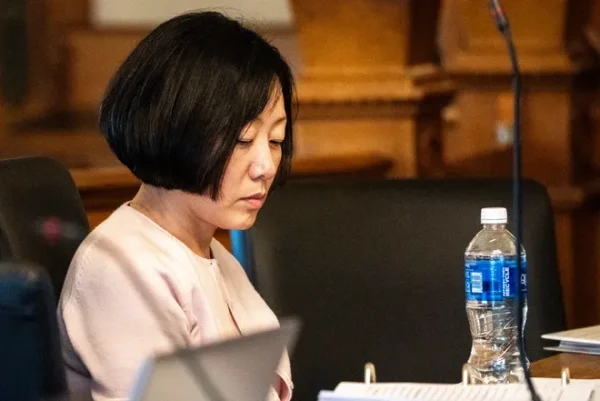Second Writing Competency II deadline approaching
October 17, 2007
Each year, students that wish to graduate are required to meet several requirements. One of those requirements is Writing Competency II.
One deadline for the requirement has passed, and others are approaching. The next portfolio submission deadline falls on Monday, Nov. 5. There are also two deadlines in the spring on Monday, Feb. 4 and Monday, Mar. 24.
The Writing Competency II requirement went into effect with the class of 2005, and students must meet one other requirement before they can begin work on Writing Competency II. Students must successfully complete English 101 and 102, and then they can begin compiling material for their portfolios.
Todd Little, director of the Hawley Academic Resource Center, said he thinks the Writing Competency II requirement serves several purposes.
“It allows the college to gauge the general writing ability of the students,” Little said. “Second, it provides an opportunity for students to reflect on their own abilities associated with writing skills.”
To pass Writing Competency II, students are required to submit a portfolio with at least four papers that demonstrate their writing abilities. The papers must come from four different classes and at least two different departments. One of the papers must be from the area of the student’s major. Possible types of papers include research papers, critical essays, book reviews, personal essays, take-home exams, newspaper articles, lab reports, unit plans or handbooks, and internship or co-op education reports.
Each paper must be at least 500 words in length, or about three pages. One paper, however, must be at least 1,500 words in length, or about seven pages. Each paper must also bear an original grade marking from the professor, or written comments from the professor stating the paper meets the portfolio requirements.
Students are also required to submit a reflective essay of about two-to-four pages, which should explain the student’s choice of papers and an explanation of how the papers demonstrate growth and development in writing.
Once a student believes he/she has met the requirements for portfolio, he/she can submit one to the Hawley Academic Resource Center, which processes the portfolios and distributes them to the readers. Readers are full-time faculty members from each of the five academic divisions of the college.
Little said readers are recommended by each division chair, and some readers read for more than one year. Little also said readers enjoy evaluating portfolios because it gives them a chance to look at what other professors are assigning students.
Each reader has two weeks to review the portfolios. After a reader reviews a portfolio, it receives a number ranking from four to one. Portfolios with a ranking of three or four are passing, and portfolios with a ranking of one or two are non-passing.
Portfolios can also be given a ranking of three-minus, which is designated as “borderline passing.” If a portfolio receives this ranking, it is sent to another reader to be evaluated again.
At the end of the two-week period, readers return the portfolios to the Hawley Center, which then processes the results and notifies students of the status of their portfolio. If a student receives a non-passing ranking, he/she is asked to make an appointment with Little to discuss the portfolio.
“Last year, 426 portfolios were submitted, and the passing rate was around 95 percent,” Little said. “So far this year, 50 portfolios have been submitted, but we are still processing the results of those.”
Senior Aaron James said he passed the Writing Competency II requirement on the first submission, and said it was not difficult.
“It wasn’t hard to put my portfolio together, but I only had two years of papers to choose from instead of four years,” James said.
Junior Missy Burch said she has not submitted a portfolio for evaluation yet, but has some concerns.
“I have lots of opportunities to write long papers, mostly from music history and religion classes,” Burch said. “The only thing I don’t like about it is that there is not really much notification about it. I think that there should be more explanation about the requirements earlier on, and it should be easier to find information about it.”
Little said if students have any questions or concerns about any of the requirements, they can either visit the Hawley Center’s Web site (www.simpson.edu/hawley) or make an appointment to meet with him in his office.












